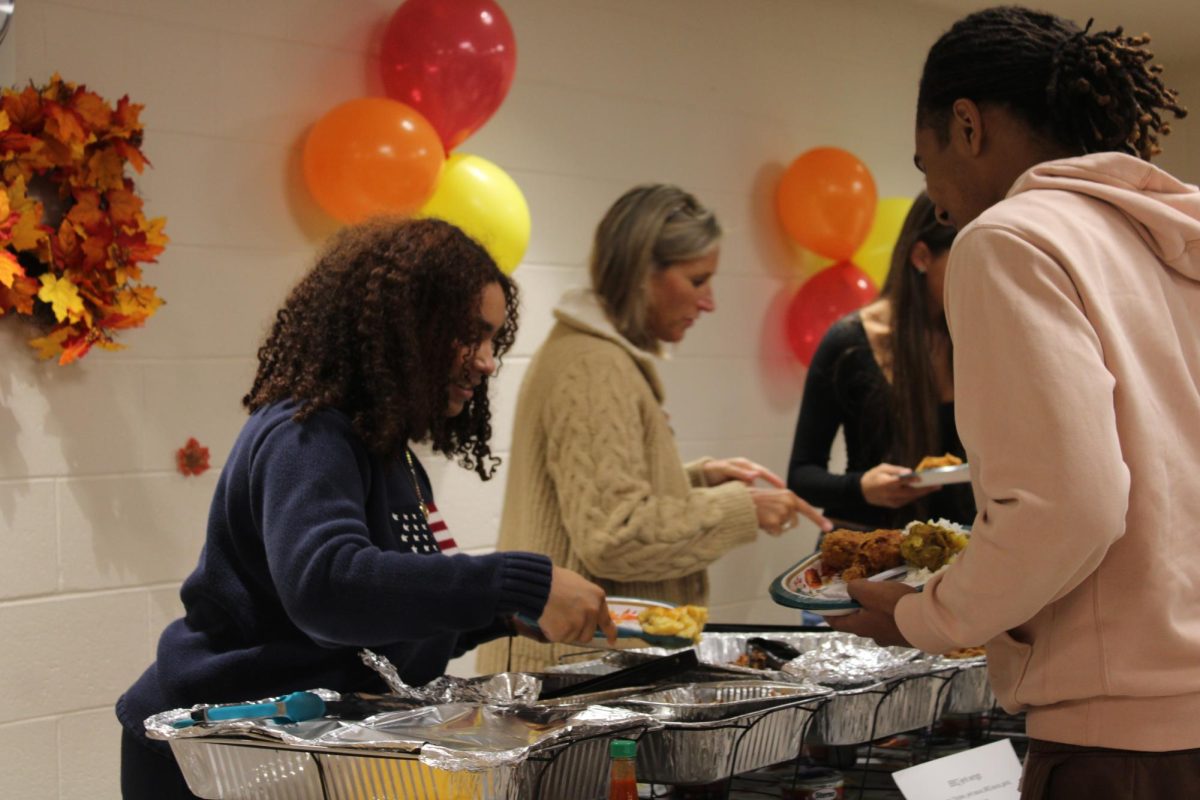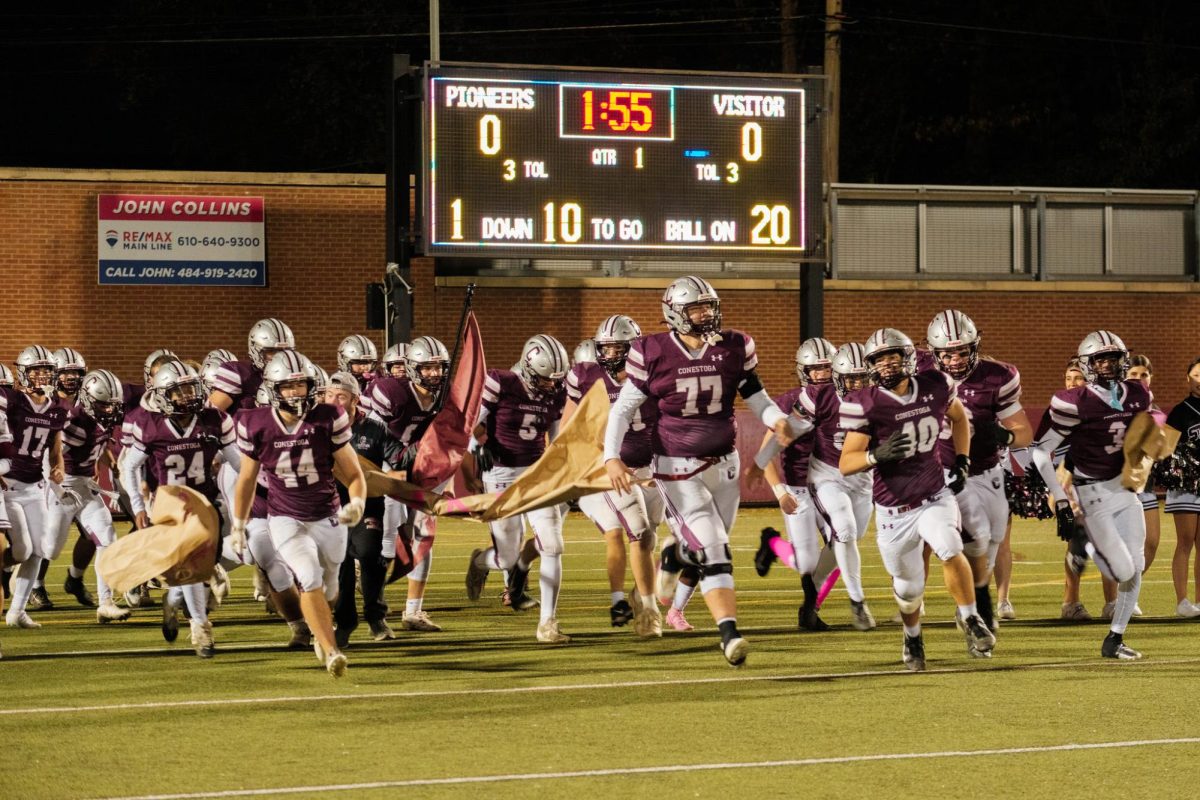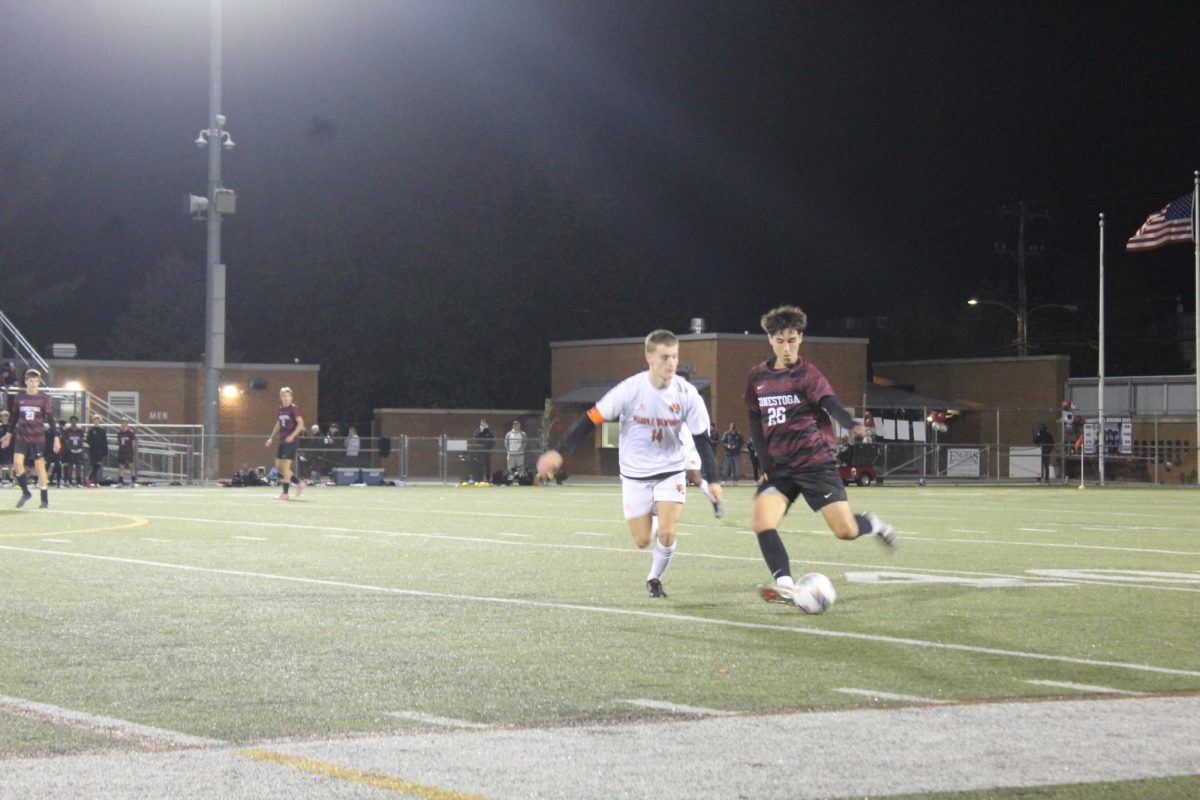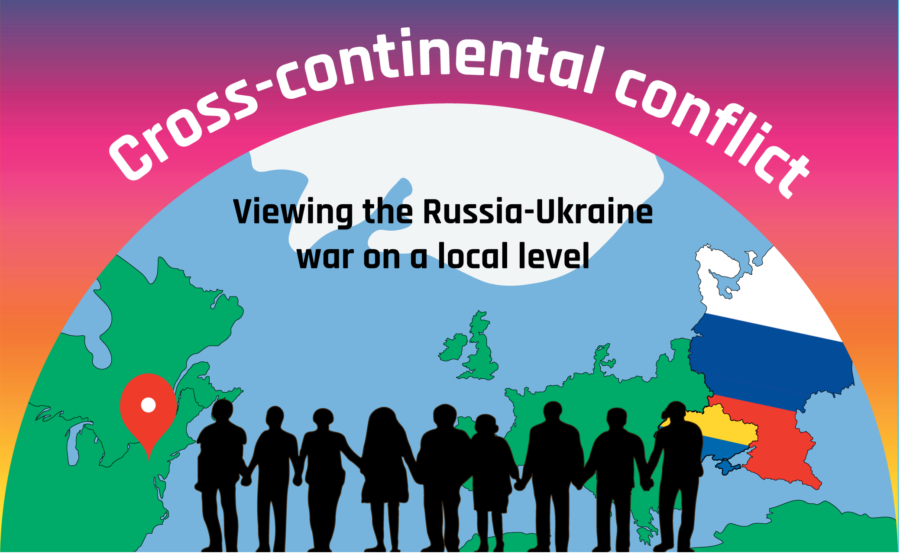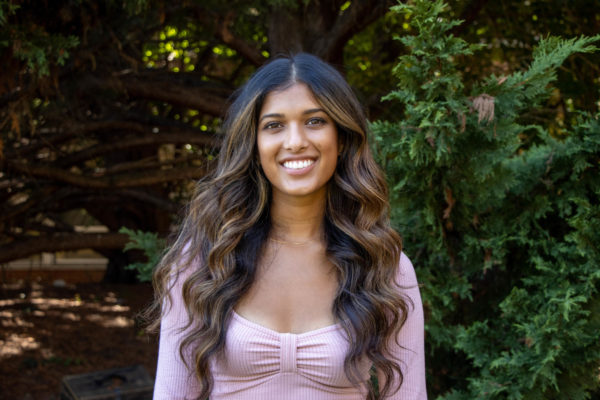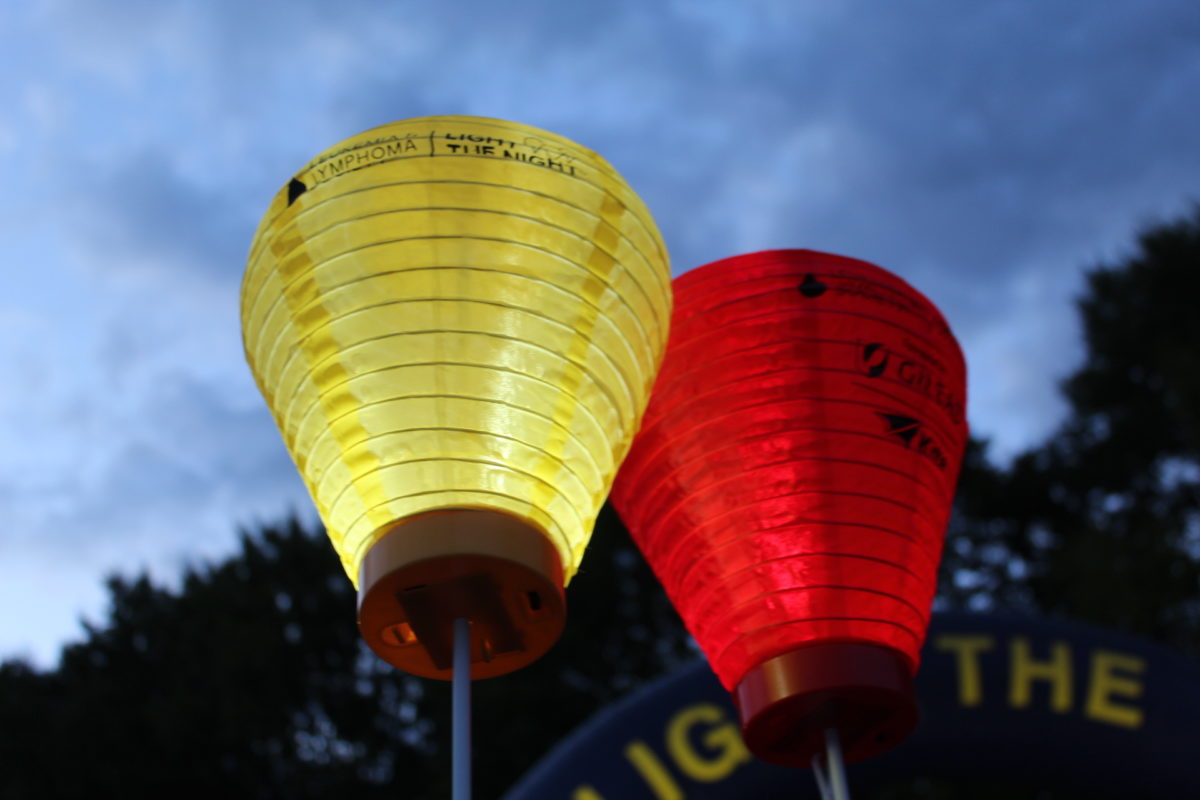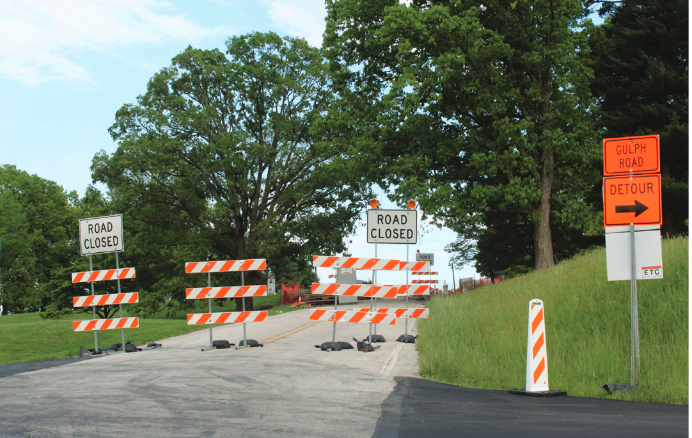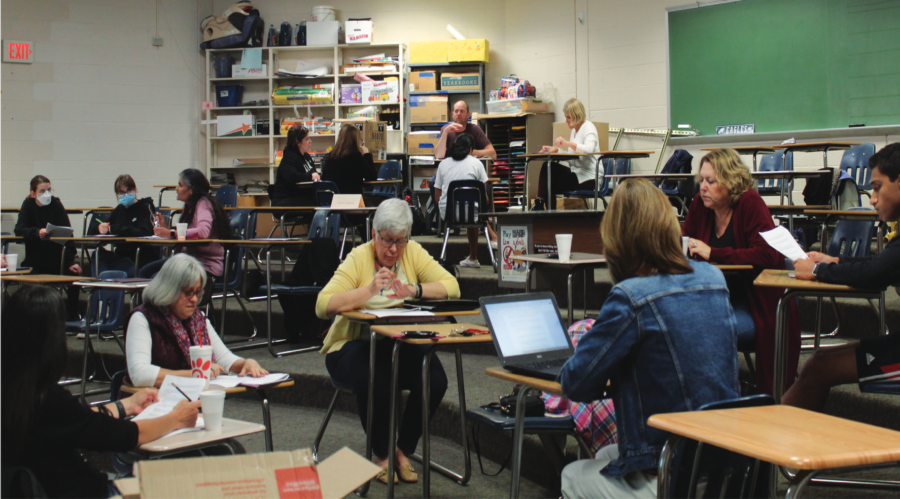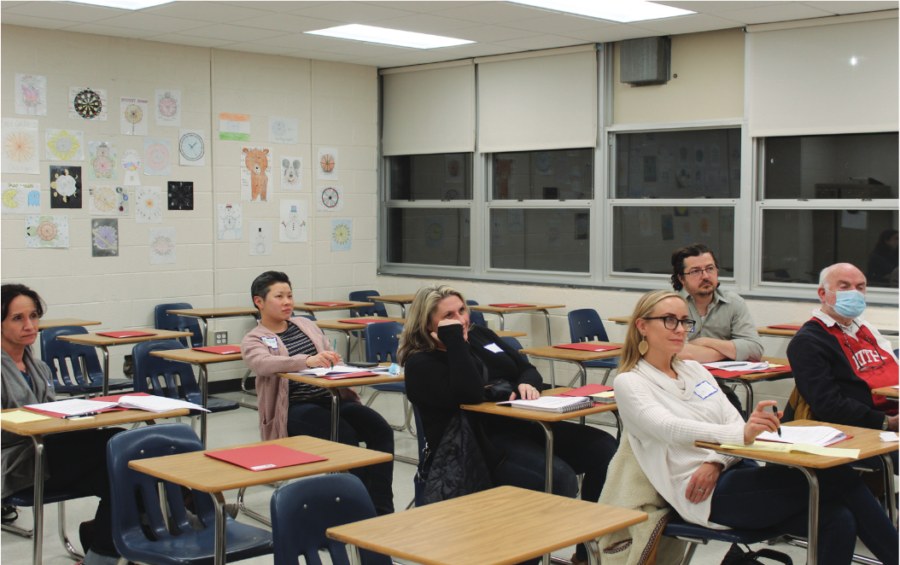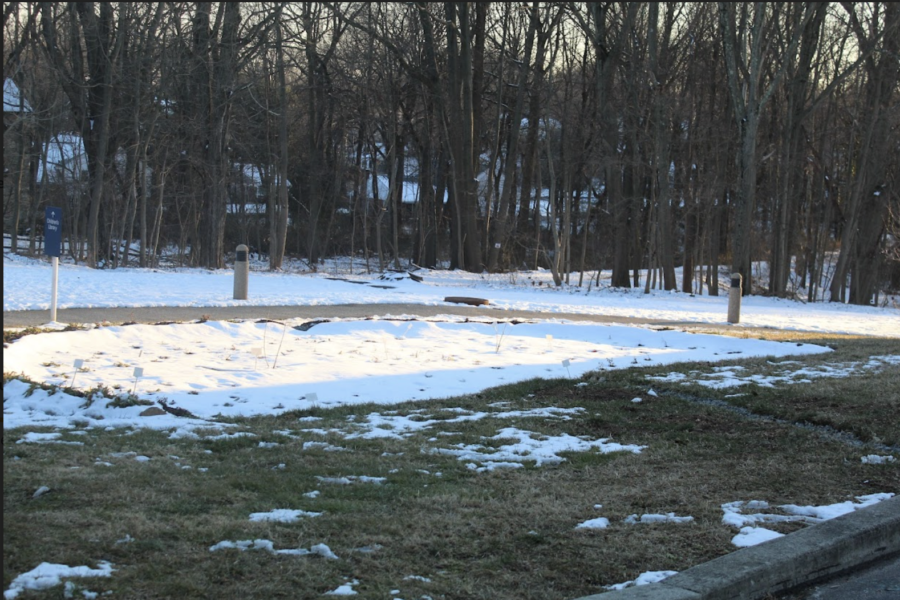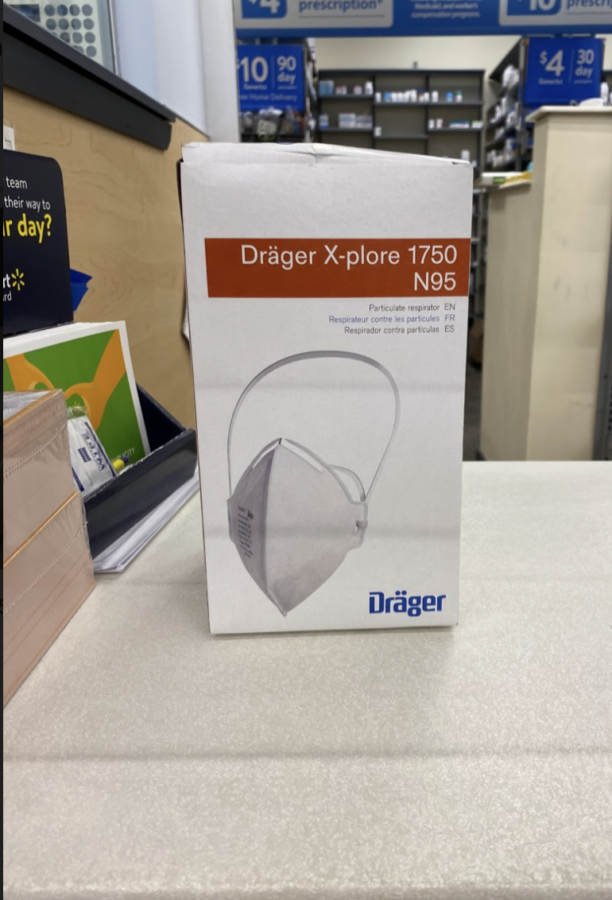By Katherine Emmanuel, Umar Samdani and Reese Wang, Co-Copy Editor, Co-Managing Editor and Co-Editor-in-Chief
Senior Emma Hopkins and her mother plan to travel from the suburbs of Berwyn to the city of Warsaw, Poland. There, they will rescue family members fleeing a war-torn Ukraine.
The maternal side of Hopkins’ family lives in the Ukrainian city of Kyiv. Amidst the ongoing missile attacks and military invasions, the family is taking shelter in a neighbor’s basement for several months. While men ages 18 to 60 must stay in Ukraine to fight, Hopkins’ pregnant aunt aims to send her children — ages 5 and 11 —to Warsaw, Poland, where Hopkins and her mom hope to secure and transport them to the U.S. However, to travel overseas, Hopkins and her mother must obtain a visa, a process slowed by the Ukrainian embassy facing an overflow of requests. Hopkins believes her cousins will have a better life, with steady access to basic necessities to food and water.
“(Coming to the U.S.) is more so to just keep them away from (the war) becoming the normal. I think for them (it’s important) to just have the ability to feel safe where they’re at. Obviously immigrating to America is a huge decision that they probably don’t want either, you know what I mean? But in terms of basic safety and not becoming normalized to war, having any family here at all is the safest option for them at the moment,” Hopkins said.
Although political tension has existed between Russia and Ukraine for decades, current conflict stems from Russia’s recognition of breakaway Ukrainian regions claimed by Ukranian officials to host Russian terrorist organizations. On Feb. 24, Russia invaded Donbas, an Eastern Ukrainian territory, to eliminate the possibility of Ukraine allying with the North Atlantic Treaty Organization (NATO). Consequently, Ukrainian President Volodymyr Zelensky severed relations with Russian president Vladimir Putin and declared martial law against Russia.
Hopkins is not the only one to be negatively affected by the European conflict. Students, administrators and community members of various backgrounds are impacted by the war.
Professional photojournalist and 2013 Conestoga alumnus Zach Lowry has independently photographed in various conflict zones, including the political unrest caused by ISIS in Iraq and Syria. After witnessing the Russia-Ukraine war unfold on television, Lowry felt a drive to obtain a more genuine representation of the situation.
“In kind of following all the news and consuming all the images that were coming out of those conflicts, I felt that the way that the conflict was being visually translated to the world, at least to me, was somewhat distant,” Lowry said. “And I thought perhaps I could contribute a better record of that situation.
On March 4, Lowry arrived in the Ukrainian capital of Kyiv, where he spent time with soldiers at military checkpoints, injured civilians in hospitals and other areas decimated by Russia’s invasion. At the end of each day, Lowry posts his photos on his Instagram account @Lowry.Zach. Each post contains a caption that narrates the image’s context. Lowry acknowledges the difficulty of taking sensitive photos during a time of warfare. However, he knows the importance of his work and believes that his photos have positive social implications.
“It’s never easy to see these sorts of things happen in front of your eyes, and it’s difficult to watch so much human suffering be inflicted on people. But at the same time, while you are seeing this, you have to kind of remind yourself that there is a larger importance to document what’s happening,” Lowry said. “People in the world need to see and need to face the reality of what’s happening here. There are human rights being violated here. There are war crimes being committed here. And if we as journalists and photographers choose to look away, how will people see?”
For the time being, Lowry plans to continue residing in Ukraine, and he hopes to release a documentary about his experiences. While he admits his job can be both mentally and physically taxing, he is also energized by the compassion he has experienced.
“I characterize war zones as an extreme dichotomy of humanity and inhumanity. On one spectrum, there’s a lot of death — senseless death — and destruction happening here. But on the other end, there’s also an enormous amount of love and compassion and empathy occurring here,” Lowry said.
Local connections to war-zone residents
Hopkins has feared for her maternal family’s safety since Feb. 24, when her relatives — residing in the city of Kharkiv at the time — suddenly became unresponsive on WhatsApp.
“We couldn’t get a hold of them at all, whatsoever, because Kharkiv was one of the first cities that was bombed,” Hopkins said. “We found out later that they had to evacuate into the neighboring suburbs of the city because they had a mother-in-law that was there. So then they created this makeshift bomb shelter in her basement.”
Toward the end of the day on Feb. 25, Hopkins finally received a message from the WhatsApp group: her family had obtained access to a cell phone, and they were alive and well.
Similarly, seniors Sofia Khugaeva and Leo Khugaev used social media platforms like FaceTime and WhatsApp to keep in touch with family members. While familial communication was relatively easy, Russia blocked Instagram, making it difficult for the twins to reach their friends.
The twins grew up in Russia and moved to the U.S. in 2019 due to their mom’s job, and still have family members in both Russia and Ukraine. For Khugaeva, her family’s well-being is her biggest concern.
“Day to day, it’s in the back of our minds. We’re constantly checking the news to see if (the war) is worsening,” Khugaeva said. “It’s worrisome because of the family that we have in Ukraine, but also because the family that we have in Russia could get trapped.”
While the twins are closely related to the war, many other community members are not. Khugaev says that to close this geographical and cultural gap, conversation is the key.
“In our community, for example, we are really far away from the conflict in Russia and Ukraine. I think when people do have these conversations, they are able to grasp the seriousness of the situation, and it’s not just like, ‘Oh, it’s a headline in the news,’ because people are actually getting hurt. When we talk about (events), they stay in our minds longer,” Khugaev said. “This is an actual, multi-level issue. It’s not just black and white. Everybody is getting hurt in this conflict, both Russians and Ukrainians.”
A Resurgence in Culture
Assistant Principal Dr. Matthew Sterenczak is not surprised by Ukraine’s political unrest, given the country’s history of conflict.
Both sides of Sterenczak’s family immigrated from Ukraine, often during times of turmoil.
“I think my family coming to this country is entirely a result of a lack of freedom in the Ukraine, and people just jockeying for that land, or for that territory, and quite frankly, to eliminate that culture,” Sterenczak said. “If circumstances weren’t different and my family didn’t feel like they had to leave… I guess this is almost kind of dark, but there’s always this feeling that it was never going to be safe for us there.”
Growing up near New York City, Sterenczak immersed himself in Ukrainian culture in a metropolitan area home to around 164,348 Ukrainian-Americans. His family drove 45 minutes weekly to attend Ukrainian Catholic Church mass. He frequently went to his grandparents’ house, a cultural hub in itself, with Ukrainian art, holiday traditions and a wood portrait engraving of Ukrainian poet Shevchenko.
Yet, Sterenczak believes he didn’t understand what it meant to be Ukrainian until he was older. Without Ukrainian friends his age with whom he could connect, Sterenczak remembers the first time he heard the Ukrainian national anthem in sixth grade, watching figure skater Oksana Baiul receive her gold medal at the 1994 Winter Olympics, the first following the dissolution of the Soviet Union.
“Growing up as a kid, (Ukraine) was still the Soviet Union. When you look on a map, you’re not on the map. It’s the Soviet Union; you don’t see Ukraine. That was hard to understand as a kid. I think it wasn’t until I understood more that I really appreciated what it meant to be (Ukrainian) and what that history meant and to take pride (in it),” Sterenczak said. “There was a period of my life and, you know, you’re in high school. It’s awkward, right? I got this ‘Sterenczak,’ not everybody can say it. Not everybody can spell it. People asked, ‘what is it?’ There was a period where I would say, ‘it’s Russian,’ because it was easier to explain away.”
Continuing to talk with his family, Sterenczak feels he now has a stronger grasp of his culture as an adult, realizing a possibly grim reality.
“I was talking to my dad yesterday, and he’s just like, there will not be Ukraine. And it will not be Ukraine in your lifetime,” Sterenczak said. “I think that was really tough to hear, to think about living a lifetime of Soviet occupation to a moment of freedom to now, whatever this is.”
Finding Solidarity through Community
Intermittent responses from her Ukrainian relatives left Hopkins and her family extremely concerned. Searching for solidarity, Hopkins began to connect with fellow Ukrainian-Americans on social media. She has found that speaking with other students has eased her stress.
“It’s nice to know that there’s someone else that’s not necessarily going through the same thing but has that sort of connection. People can talk about it here as much as they like, but it’s different to talk about it when you have family there, when you have a connection to the country,” Hopkins said. “There’s definitely something just a little bit comforting being able to talk about it with people that have the same sort of experiences.”
Sterenczak appreciates the widespread support for Ukrainian well-being he has witnessed.
“It’s awesome the way that people have gravitated towards this cause and I hope people understand what it means. I think it’s very trendy to back causes or things that are on the news and I think what this really is, why people are seeing the resistance that they are, it has surprised many people. I will tell you that it has not surprised me or anyone in my family. This is about fighting for a home, fighting for a culture, fighting for language,” Sterenczak said. “This uniquely Ukrainian spirit, this culture: that is what they are fighting for.”
[Sidebar] : Fundraising (Reese)
Inspired by her neighborhood’s tight-knit community that helps each other out, such as during power outages and by picking up each other’s kids from school, Thomas wanted to do something to help her Ukrainian neighbor.
Thomas’s neighbor works at the Ukrainian Culture Center in Jenkintown, Pennsylvania, which is holding a donation drive for Ukrainian refugees. Wanting to give her classmates an opportunity to help, Thomas approached Students Organized for Antiracism (SOAR) sponsor Keri Phillips to introduce the drive to the school.
“There’s very little that we can do now, especially with nothing being able to be sent into Ukraine. There’s not many things that we as one person can do, but by one person donating a little bit, that can change someone’s life,” Thomas said.
The donation drive is currently ongoing and sponsored by SOAR, but Thomas hopes to expand it to the whole school in the near future. On Fridays, Thomas puts the donated items in her car and brings them to her neighbor, so that volunteers can package the items and send them out on Saturdays.
After watching the news, community member Lisa Schreiber took action.
“My husband’s great-grandmother had (went through) the exact same process 80 or 90 years ago where they left Ukraine by foot to Poland to seek a better life, and there was just something really poignant about that imagery for me, and just everything else we’ve been seeing on the news. I just felt like I had to do something,” Schreiber said.
After hearing about a fundraiser her parents’ neighbor ran in North Carolina selling seeds of Ukraine’s national flower, Schreiber decided to bring the event to Tredyffrin/Easttown Middle School (TEMS), where her child currently attends. The fundraiser, Sunflowers for PEACE, sold sunflower seed packets at $5 each, with all proceeds going to the International Rescue Committee. On March 16 and 18, the fundraiser sold seeds before school and raised around $2000, thanks to the contributions of both students and faculty.
Despite the T/E community’s geographical distance from the European conflict, Schreiber believes local students, teachers and residents alike are emotionally impacted by the Russian invasion.
“I think everybody’s feeling a little bit broken by what we’re seeing. And it doesn’t feel so far away. I mean, even though it’s in Eastern Europe, halfway across the world, there’s a sense that we are hurting too,” Schreiber said. “The world is quite small, and I think the impacts are being felt just in our local community.”
Katherine Emmanuel can be reached at [email protected].
Umar Samdani can be reached at [email protected].
Reese Wang can be reached at [email protected].






